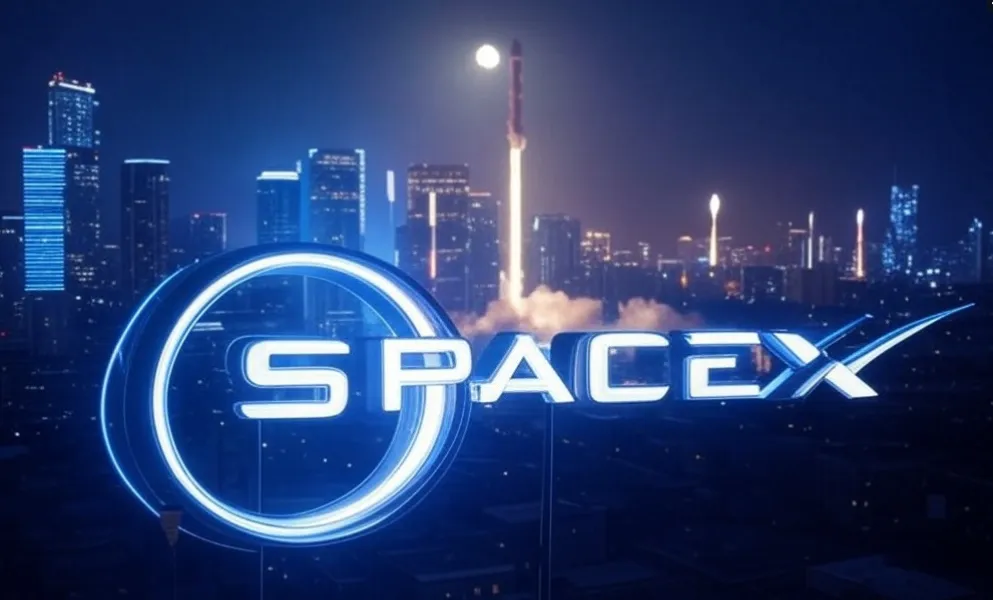SpaceX Crew-10 Launch Paves Way for Stranded Astronauts’ Return: The SpaceX Crew-10 mission is set to take off to the International Space Station (ISS) and will be a major step towards enabling the return of two NASA astronauts, Butch Wilmore and Sunita Williams, who have been stuck in orbit since the month of June 2024. This launch, scheduled for 7:03 pm ET (2303 GMT) on Friday (adjust the date if different from the March 2025 context), follows an earlier attempt that was delayed due to technical issues with ground systems. While Crew-10 will conduct scientific research as part of its mission, much of the public’s focus is on its role in finally allowing the stranded astronauts Wilmore and Williams to come home.
SpaceX Crew-10 & Astronaut Return: Key Points
- Mission: SpaceX Crew-10 launch to the ISS.
- Primary Goal (Public Focus): Enable the return of NASA astronauts Butch Wilmore & Sunita Williams.
- Stranded Since: June 2024, following issues with Boeing Starliner’s test flight.
- Return Plan: Wilmore & Williams to return aboard the SpaceX Crew-9 Dragon capsule.
- Crew-10’s Role: Its arrival is necessary to relieve Crew-9, freeing up the Dragon capsule for the return journey with Wilmore and Williams.
- Launch Date (Crew-10): Scheduled for Friday, 7:03 pm ET (verify the exact date).
- Controversy: Political figures have made unsubstantiated claims about intentional delays in the astronauts’ return.
The Stranded Astronauts: Wilmore and Williams’ Extended ISS Stay
Wilmore and Williams were originally part of Boeing’s Starliner Crew Flight Test (CFT) mission, designed to evaluate the spacecraft’s performance on its maiden crewed flight to the ISS. Although Starliner successfully docked with the ISS in June 2024, multiple helium leaks and propulsion system issues (thruster malfunctions) were discovered during the flight and while docked, rendering the spacecraft unsafe for the astronauts’ return journey as per NASA’s safety protocols.
Context: Boeing Starliner’s Challenges
The Starliner CFT mission was a critical step for Boeing to certify its spacecraft for regular crew rotation flights under NASA’s Commercial Crew Program, providing an alternative to SpaceX’s Crew Dragon. The technical difficulties encountered during the mission (helium leaks, thruster problems) were significant setbacks, leading to extensive reviews and delaying Starliner’s certification. Read more on Boeing’s Starliner program at the official Boeing Starliner page.
What was intended to be a short mission (around 8–10 days) has now stretched to over nine months (as of March 2025), far exceeding the typical six-month duration of a standard ISS crew rotation. While their extended stay is shorter than NASA astronaut Frank Rubio’s recent 371-day record (due to a Soyuz coolant leak) or Russian cosmonaut Valeri Polyakov’s all-time 437-day record aboard the former Mir space station, the unplanned nature and the technical reasons behind Wilmore and Williams’ prolonged mission have drawn significant public and media attention. The astronauts even had to receive additional clothing and personal care items delivered via cargo resupply missions, as they hadn’t packed for such an extended stay aboard the ISS.
SpaceX Crew-10’s Crucial Role in the Return Plan
Since September 2024, NASA has publicly outlined its strategy to safely return the stranded astronauts Wilmore and Williams using a SpaceX Crew Dragon. The preceding Crew-9 spacecraft, commanded by Nick Hague, deliberately arrived at the ISS with only two crew members (Hague and Roscosmos cosmonaut Aleksandr Gorbunov) instead of the usual four. They specifically left two empty seats on their Dragon capsule for Wilmore and Williams to use on the return trip.
ISS Crew Rotation and Handover
The International Space Station requires a continuous human presence for operations and research. Crew rotation missions are carefully planned to ensure there’s always a sufficient number of astronauts aboard. When a new crew arrives (like Crew-10), there is a handover period of several days where the incoming crew gets familiarized with ongoing experiments and station systems by the outgoing crew (like Crew-9) before the latter departs. The procedure ensures a smooth transition and continuity of operations.
However, for Crew-9 to safely depart with its now four-person crew (Hague, Gorbunov, Wilmore, and Williams), the next rotation crew, SpaceX Crew-10, must first successfully launch, travel to, and dock with the ISS to take over operations and maintain the required crew complement. The arrival of Crew-10 is thus the key enabler for the return journey.
Following Crew-10’s arrival and docking, a standard handover period of approximately five to seven days will typically take place. Only then can the Crew-9 Dragon capsule—carrying Wilmore, Williams, NASA astronaut Nick Hague, and Russian cosmonaut Aleksandr Gorbunov—undock from the ISS and begin its return journey to Earth, culminating in a scheduled splashdown off the coast of Florida. While Crew-9’s return was initially targeted for potentially as early as Sunday following the Crew-10 launch, that timeline is flexible and depends on the smooth execution of the Crew-10 launch, docking, and the subsequent handover activities aboard the ISS.
Political Controversy Surrounding the Delay
The astronauts’ prolonged nine-month stay has unfortunately become entangled in U.S. political discourse. Former U.S. President Donald Trump and SpaceX CEO Elon Musk publicly accused the current administration under President Joe Biden of intentionally delaying Butch Wilmore and Sunita Williams’ return for political reasons. Musk, via posts on X, did not provide concrete evidence to support this claim, which prompted significant backlash from many within the established space community and former astronauts, who cited operational complexities and safety protocols as the actual reasons.
In a White House press conference, Trump made bizarre and widely criticized remarks about the situation, referring to Williams as “the woman with the wild hair” and making inappropriate jokes suggesting the two stranded astronauts may have “fallen in love” during their extended time together in space.
NASA officials have firmly and repeatedly denied these political accusations, emphasizing that the plan for Wilmore and Williams’ safe return via Crew-9 has been consistently communicated and followed based on technical assessments and vehicle availability since the Starliner issues became apparent in mid-2024. Danish ESA astronaut Andreas Mogensen publicly clarified the operational timeline and safety rationale on the social media platform X (formerly Twitter), only for Musk to respond with an offensive personal remark. While some retired astronauts defended Mogensen and NASA’s process, Wilmore himself, in a communication from the ISS, appeared to lend some credence to Musk’s comments by suggesting they were likely “factual,” despite admitting he lacked detailed knowledge of the situation on the ground, further fueling the controversy.
NASA’s Stance on Safety
Throughout the situation, NASA’s public stance, articulated by administrators and flight directors, has consistently prioritized astronaut safety above all else. The decision not to use the compromised Starliner for return and to wait for the planned rotation of the SpaceX crew aligns with established protocols for ensuring crew well-being during complex spaceflight operations. Official NASA statements can be found on nasa.gov/news.
International Collaboration Amid Tensions
Despite geopolitical tensions on Earth, particularly between the U.S. and Russia, the International Space Station (ISS) program continues to showcase remarkable international cooperation. Russian cosmonauts have regularly traveled to the ISS aboard SpaceX Crew Dragon capsules as part of crew swap agreements, while NASA astronauts continue to occasionally use Russia’s Soyuz spacecraft for launches departing from Baikonur Cosmodrome in Kazakhstan. This ongoing collaboration, essential for maintaining ISS operations, highlights the unique diplomatic relationship and mutual reliance maintained by the partner space agencies (NASA, Roscosmos, ESA, JAXA, CSA) in the field of human space exploration. The Crew-10 mission itself, with US, Japanese, and Russian crew members launching on a US vehicle, exemplifies this partnership.

SpaceX Crew-10 Team Members
The Crew-10 mission features a diverse, international lineup of experienced and first-time space flyers:
- Anne McClain (NASA)—Commander, experienced astronaut (previous ISS expedition).
- Nichole Ayers (NASA)—Pilot, first spaceflight.
- Takuya Onishi (JAXA—Japan)—mission specialist, experienced astronaut (previous ISS expedition).
- Kirill Peskov (Roscosmos—Russia)—Mission Specialist, first spaceflight.
Their arrival will ensure ISS operations continue smoothly with a full crew complement, perform valuable scientific research, and critically enable the safe return home for Butch Wilmore, Sunita Williams, and the rest of the Crew-9 team.
Official Mission Information
For official details about the Crew-10 mission, crew biographies, launch updates, and ISS activities:
- NASA Commercial Crew Program: nasa.gov/commercialcrew
- SpaceX Missions: spacex.com/missions
- International Space Station (ISS): nasa.gov/iss
Conclusion: Crew-10 Launch Critical for Astronaut Return
As reported by Buzz24 Times, the successful launch and docking of SpaceX Crew-10 is a pivotal milestone, not just for its own scientific objectives, but critically for resolving the long-running and somewhat politically charged issue of the stranded astronauts. Butch Wilmore and Sunita Williams’ unexpected nine-month stay aboard the ISS, stemming from the Boeing Starliner technical failures, has been a test of their endurance and NASA’s contingency planning. NASA’s emphasis on mission safety, despite external commentary, has ensured that astronaut well-being remained the top priority throughout the development of the return plan via Crew-9. The arrival of Crew-10 finally sets the stage for bringing Wilmore, Williams, Hague, and Gorbunov home safely.
Disclaimer: Information regarding the mission timeline (Crew-10 launch, Crew-9 return), political commentary, and astronaut status is based on reports available around March 2025. Space mission schedules are dynamic and subject to change due to technical difficulties, weather, or operational decisions. Always refer to official NASA (nasa.gov) and SpaceX (spacex.com) sources for the most accurate and up-to-date information.



